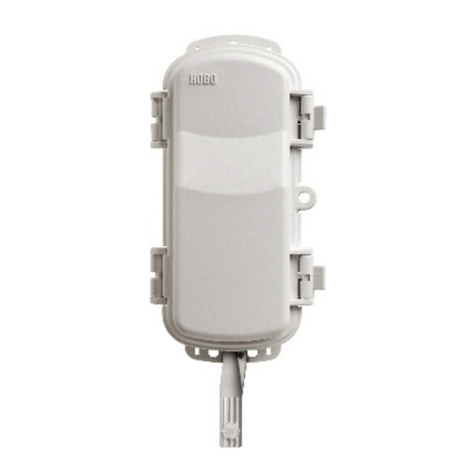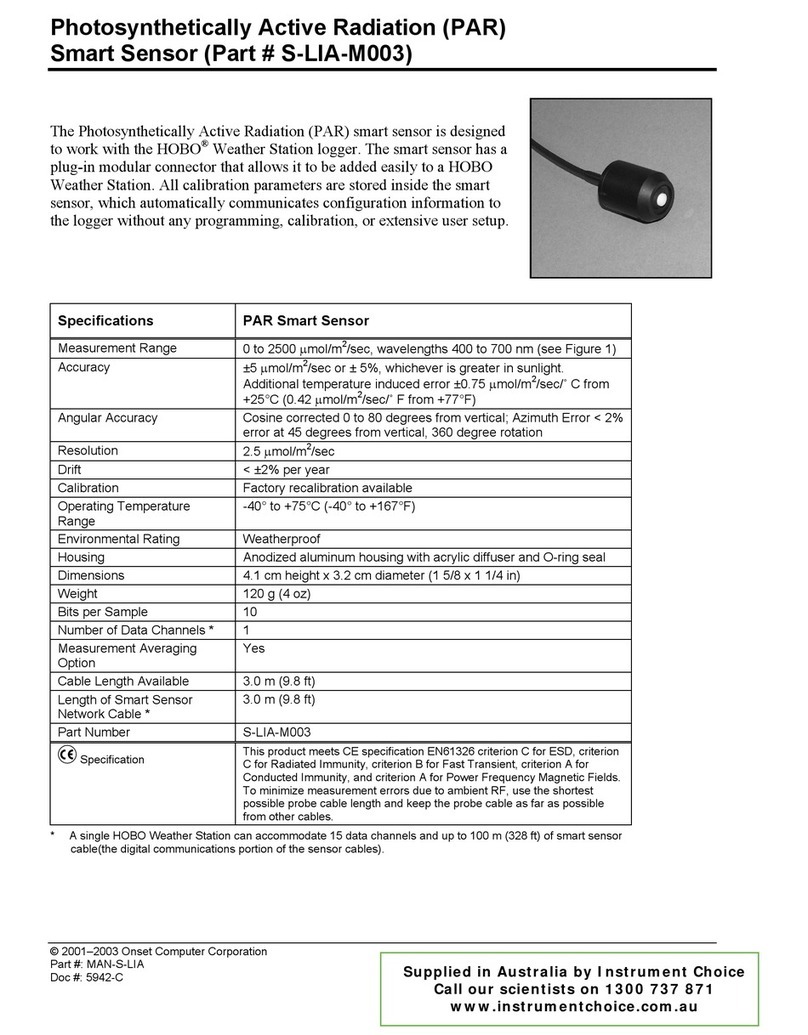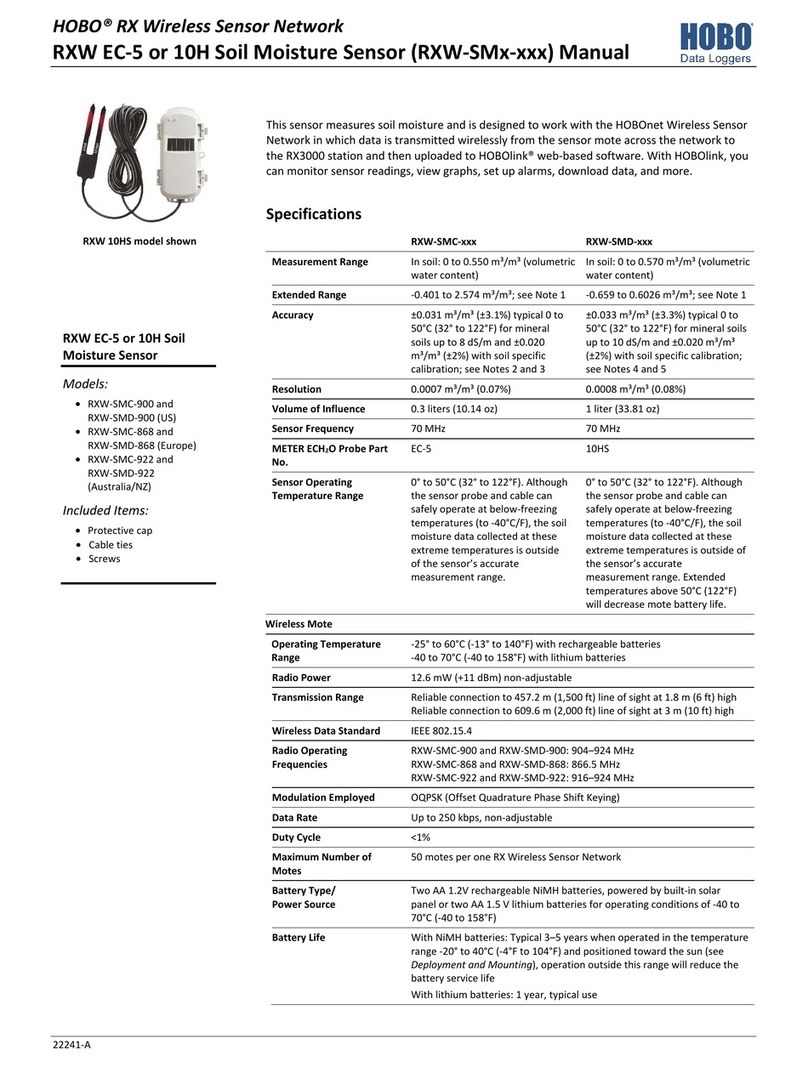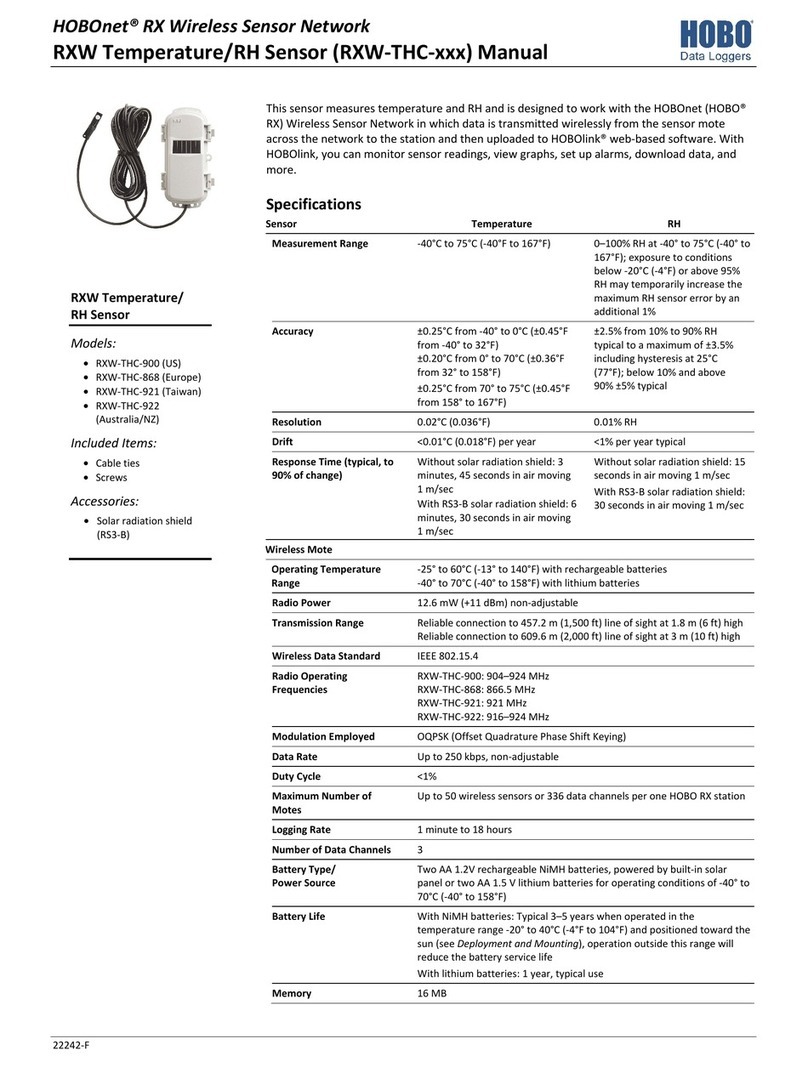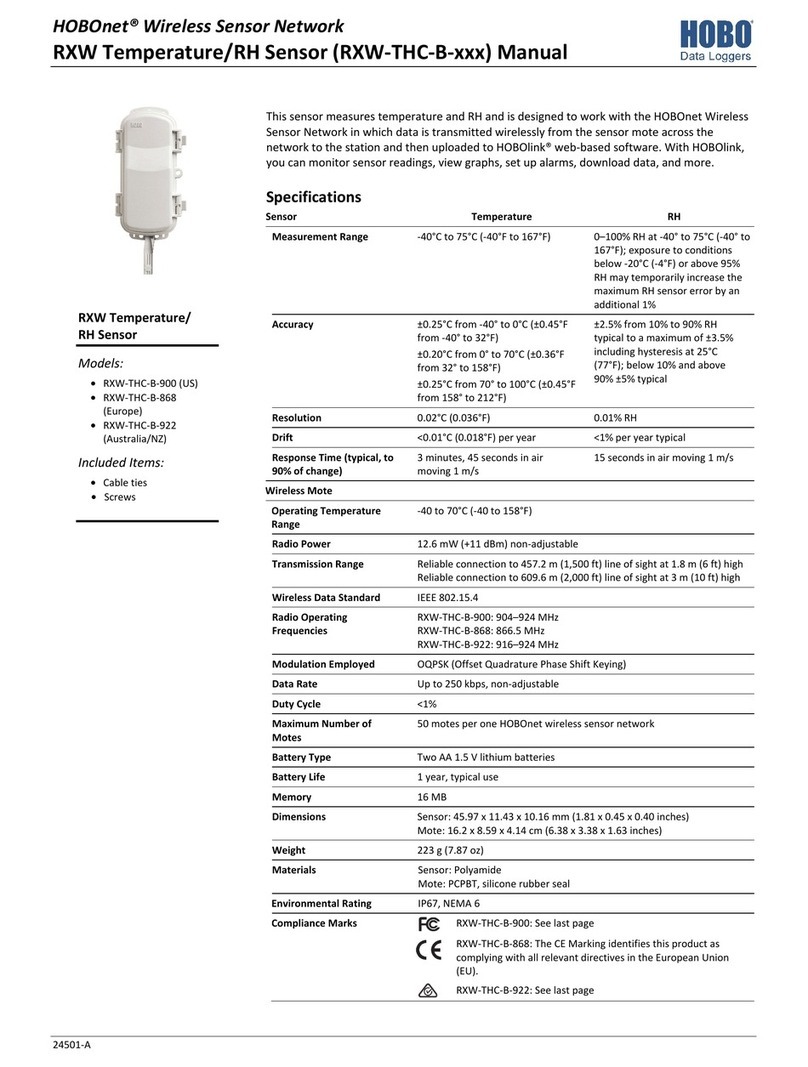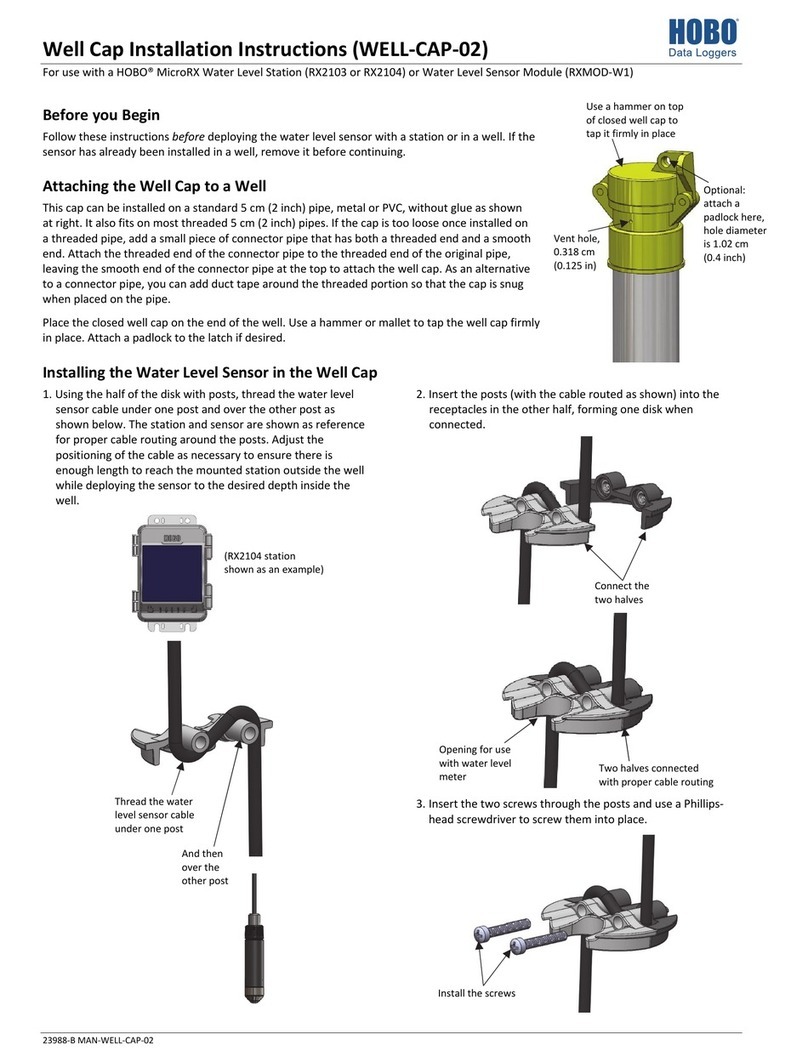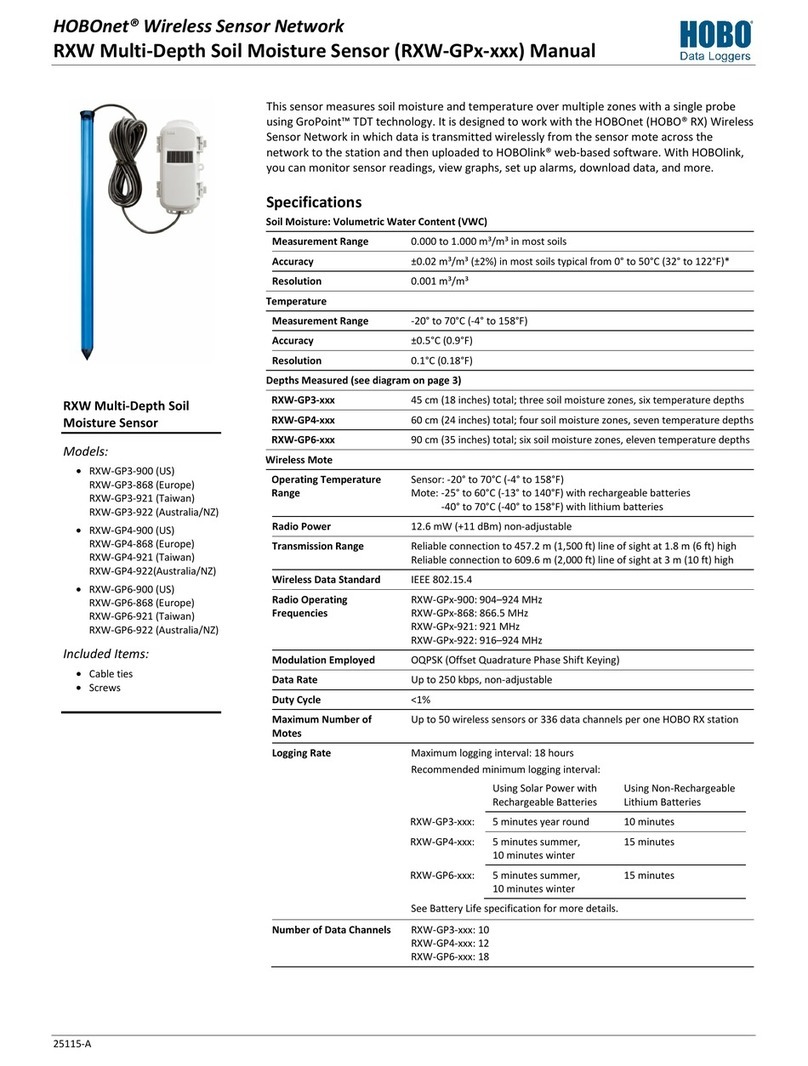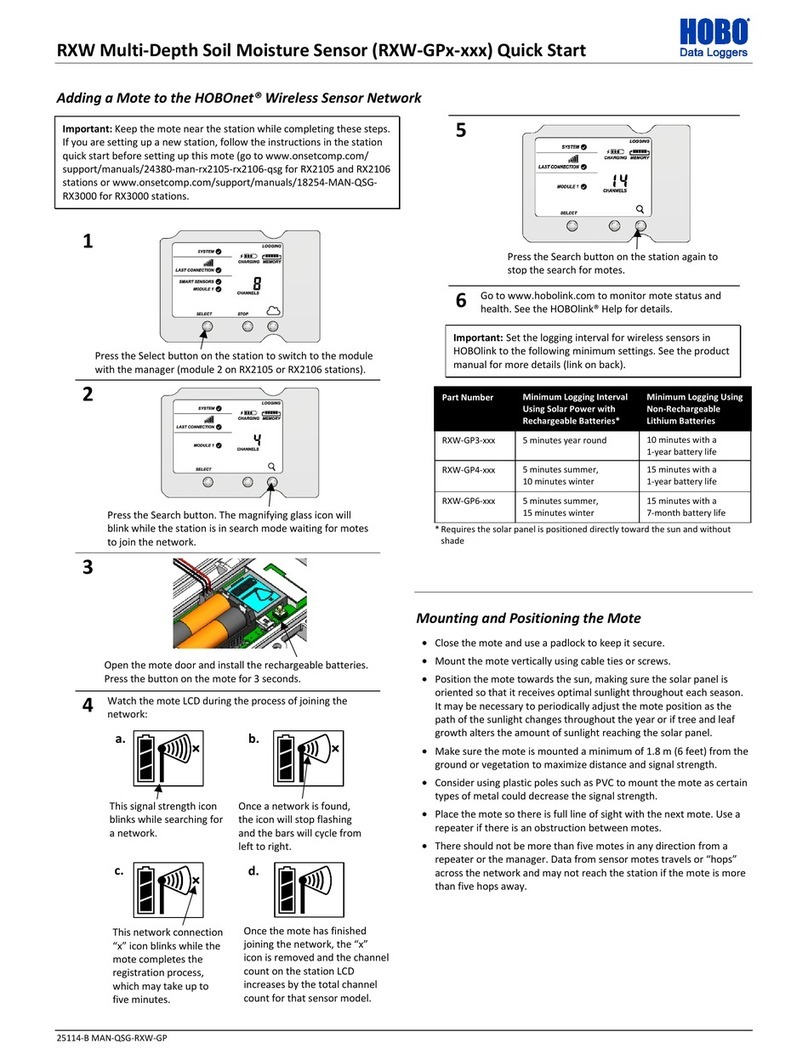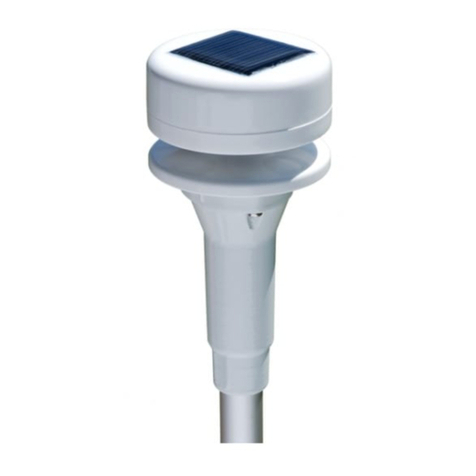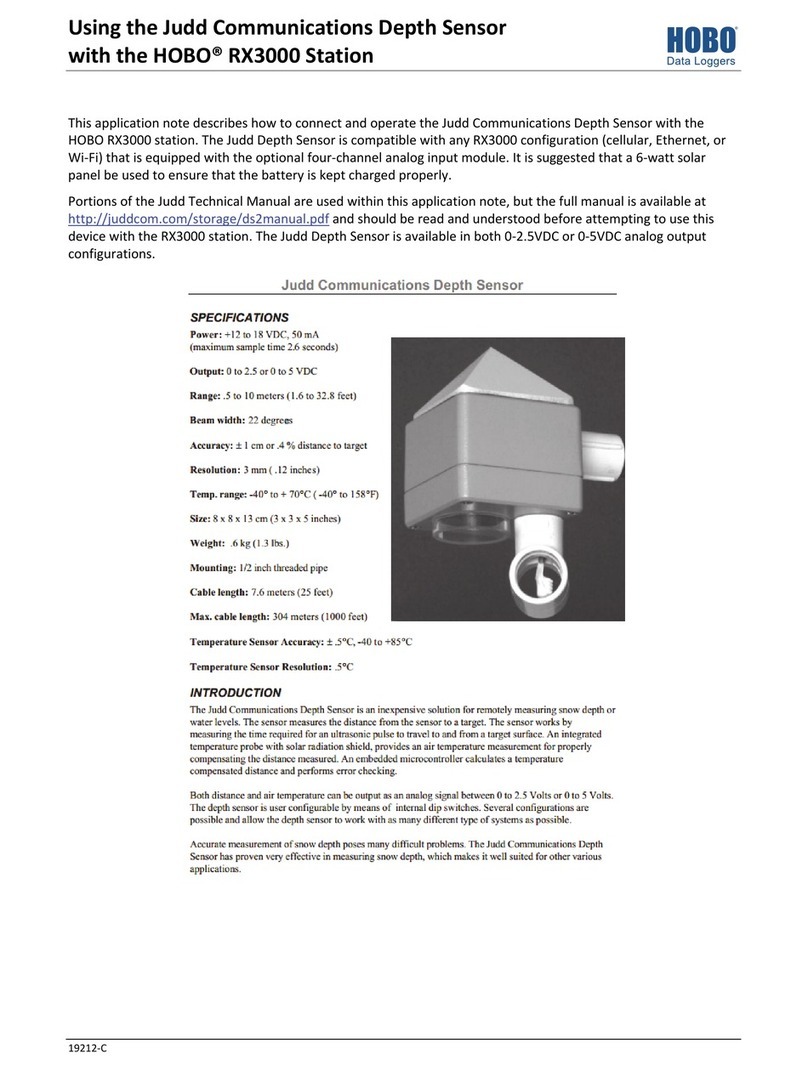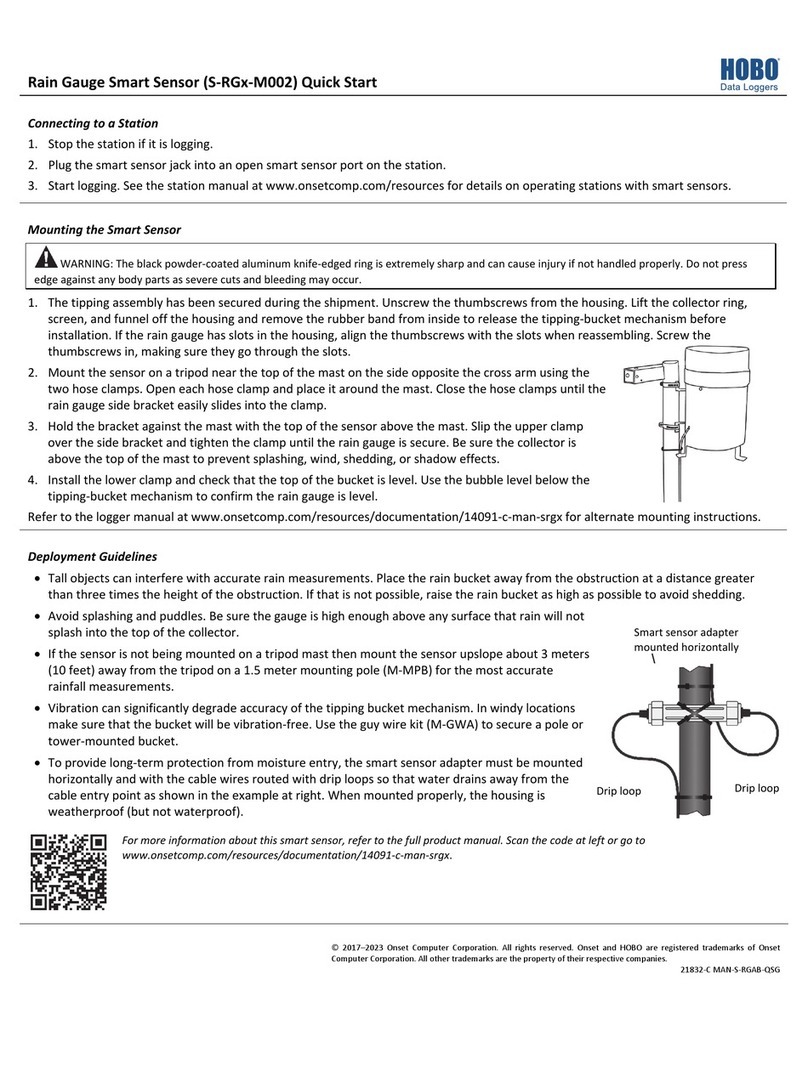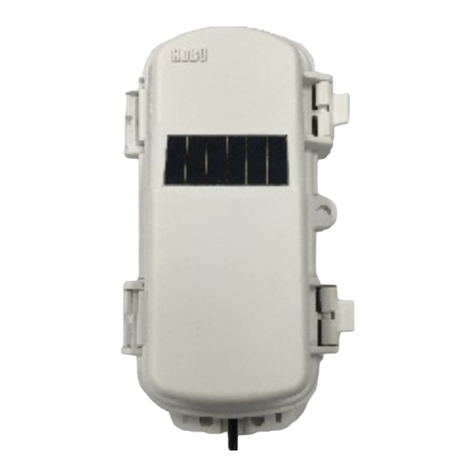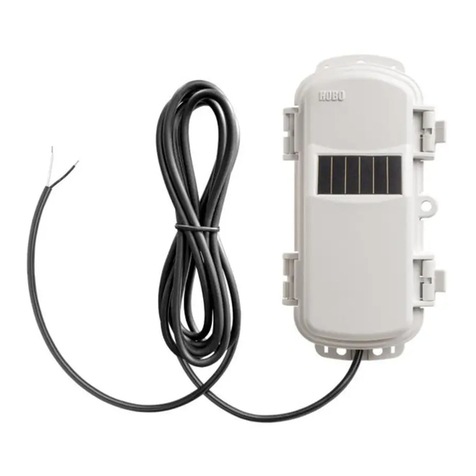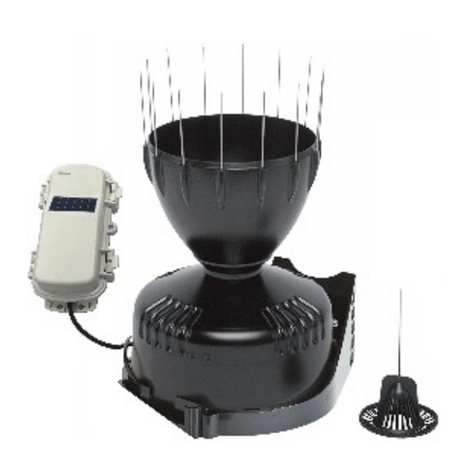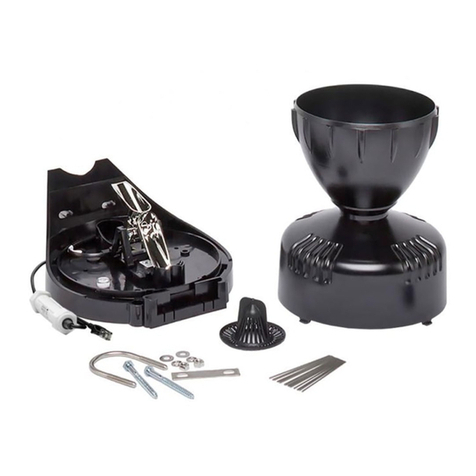
RXW Davis Wind Speed and Direction Sensor (RXW-WCF-xxx) Manual
1-800-LOGGERS 5 www.onsetcomp.com
•Consider using a 3/16 inch padlock to restrict access to the
mote. With the mote door closed, hook a padlock through
the eyelet on the right side of the door and lock it.
•To maximize the communication between motes, place
the mote within 304.8–457.2 m (1,000–1,500 feet) and full
line of sight with the next mote in the network and at least
1.8 m (6 feet) from the ground.
•If there is an obstruction between two sensor motes or
between the sensor mote and the RXW Manager, then use
an RXW Repeater (RXW-RPTR-xxx) mounted higher than
the two motes. For example, if there is a hill or mountain
between the sensor mote and the RXW Manager, place a
repeater at the top of the hill between the sensor mote
and the RXW Manager.
•There should not be more than five motes in any direction
from a repeater or the RXW Manager. Data logged by a
wireless sensor must travel or “hop” across the wireless
network from one mote to the next until it ultimately
reaches the RXW Manager at the RX3000 station. To make
sure the data can successfully travel across the network,
the sensor mote should not be more than five hops away
from a repeater or manager.
•The RX Wireless Sensor Network can support a maximum
of 50 motes.
•Use a #4-40 screw to attach a ground wire to the port on
the back of the mote if you are deploying the mote in a
location where lightning is a concern.
•Make sure the mote remains in a vertical position once it
is placed in its deployment location for optimal network
communications.
Sensor Mounting Guidelines
Use the following guidelines to determine the best location for
installing the sensor.
•To ensure correct orientation of the wind vane, the sensor
must be mounted so that the anemometer arm points
north. See North Alignment for steps on finding true north.
•For the most accurate readings, the sensor should be
mounted 2 m (7 ft) or more above the ground and
consistent with meteorological standards for the
application. The sensor should be mounted at least 2.1 m
(7 ft) above the roof line if mounted on a roof and
mounted at a distance of at least five times the height of
the nearest tree, building, or other obstruction. You may
do this by mounting the sensor on an Onset tripod or
mast, or a metal pipe. You may mount the sensor on a
wooden post if it has a side facing due north for mounting.
•The tripod or mounting mast must be properly grounded.
For field installations, you can use Onset’s Grounding Kit
(M-GKA).
•If you live in an area subject to frequent thunderstorms,
installing a lightning rod nearby can reduce the risk of
damage.
•Be sure to secure the sensor cable with cable ties to
protect it from damage.
•Secure the mast the wind sensor is mounted on so that it
does not vibrate. If you are using Onset masts or tripods,
secure them with guy wires.
•The sensor can be damaged with improper handling. Store
the sensor in its shipping box until you are ready to install it.
•To minimize measurement errors due to ambient RF, use
the shortest possible probe cable length and keep the
probe cable as far as possible from other cables carrying
high frequency or high current signals.
Sensor Mounting on a Mast
Follow these instructions for mounting the sensor on a tripod
or mast. The U-bolts included can be used for mounting the
sensor on a mast or tripod with an outside diameter ranging
from 32–44 mm (1.25–1.75 inches). Larger U-bolts (not
supplied) can be used to mount on a mast or tripod with a
maximum outside diameter of 64 mm (2.5 inches). To mount
the sensor on a mast or tripod smaller than 32 mm (1.25
inches), use a U-Bolt that fits the anemometer base openings,
but has a shorter threaded section.
1. Place the U-bolt around the pole so that its two ends
extend through the holes in the mounting base. Loosely
secure with the flat washers, lock washers, and hex nuts.
2. Raise the anemometer to the desired height on the pole
and swivel it so the anemometer arm is pointing north.
3. Using an adjustable wrench or 7/16 inch wrench, tighten
the hex nuts until the anemometer is firmly fastened on the
pole.
Sensor Mounting on a Wooden Post or Surface
Follow these instructions for mounting the sensor on a wooden
post or surface. The sensor must be mounted on the side that is
facing due north (the mounting arm must point north for
proper wind direction measurements).
1. Hold the anemometer base against the wood surface and
use a pencil to mark the location of the two holes on the
base.
2. Use a drill with a 5 mm (3/16 inch) drill bit to make pilot
holes in these locations.


